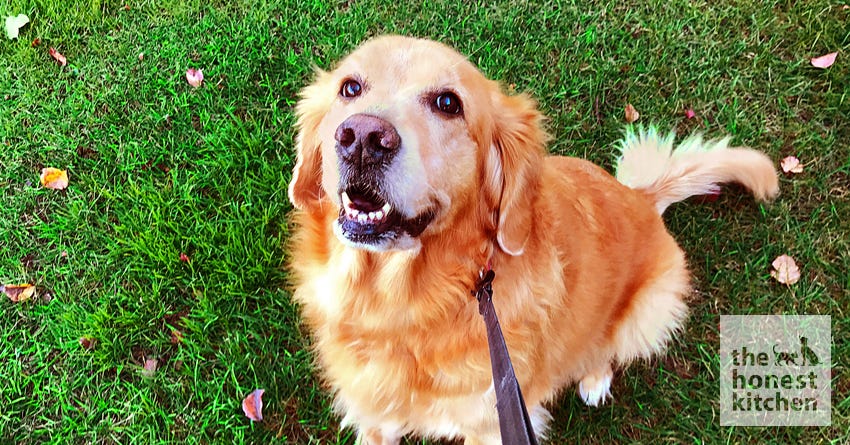Just because your dog is entering his golden years doesn't mean he should stop tagging along for adventures.
In fact, senior dogs are perfectly capable of hiking, exploring and camping with you—as long as you're willing to adjust your expectations and make some changes to your routine.Time Your Hikes Right
Morning and evening hikes make the most sense in summer so you can avoid the hottest hours of the day. During the winter, mid-day hiking is usually better to take advantage of the warm sun. That said, hiking in the fall is often great for older dogs, according to Kayla Fratt, a dog trainer with a degree in Organismal Biology and Ecology and a member of the International Association of Animal Behavior Consultants. "September and October can have great 'Goldilocks' temperatures and avoid the muddiness of March or April," Fratt says. Regardless of when you go, it's important to keep in mind that senior dogs are more susceptible to temperature extremes. During summer, always bring plenty of cool water, and in winter, make sure you protect paws from ice and salt. "Learn how to tell when your dog is too hot or too cold and have a backup plan if he starts to struggle with temperature extremes," says Fratt. "There are plenty of products to help keep your dog warm, like jackets and booties." As a general rule, excessive panting means it’s too hot, your dog is tired, or he needs a break. "Let's put it in a more objective way: if your dog's tongue is hanging outside of the mouth, this should be a sign that maybe it's time for cold water and a break," says Dr. Victor Oppenheimer, Veterinary Director at the Hospital de Animales Perla del Sur. "The longer it's hanging outside their mouth, the higher the risk of a heat stroke." Also, keep in mind that reaction to temperature is very individual—some dogs do really well in warm weather while others prefer cold days. ©istockphoto/chapin31
©istockphoto/chapin31Adapting Your Hiking Routine to Your Dog's Needs
While younger dogs might have lots of energy for long, arduous hikes, senior dogs do better on flatter terrain and shorter hikes. "Rocky and uneven paths can be hard on dog’s joints and paws," says Fratt. "I also like to hike near water with any dog so that they can keep cool." While all dogs are individuals, Fratt points out that your dog’s baseline fitness level has a big impact on what kind of hiking he'll be able to do as he gets older. "A working Search & Rescue dog that spent his youth finding people in avalanches will have a different baseline fitness level from a city-dwelling dog, even if they’re the same age and breed," says Fratt. "My dog spends three to five days per week running, hiking or swimming with me on rugged Colorado terrain; when he hits old age, he’ll likely be in much better shape than my Dad’s dog, who spends her days going for leisurely strolls." Another factor to consider is any health issues your senior dog might already be dealing with, such as arthritis, degenerative joint diseases, ligament and tendon disease, herniated discs, and more, says Oppenheimer. "Don't overdo exercise; their joints and bones are weaker than ours," she says.How Health Impacts Fitness
If you have concerns about your dog's health, talk to a veterinarian about a complete check-up. Aside from mobility issues, you should always look into concerns with breathing and circulation. "Just like humans, old injuries can show up again as dogs age," says Fratt. "Remember when Rover tore a tendon playing frisbee at age 2? He might be feeling that injury again when he starts limping at age 13."
Another thing to keep in mind: Dogs who are used to being couch potatoes might get sore after a long hike, so to avoid pain and discomfort, don't push your dog too hard. "Pushing your dog of any age too hard is dangerous, but this is especially true for older dogs," says Fratt. "Many dogs aren’t very good at telling us they’re tired, hot or sore, so we have to use our own best judgment." Finally, always remember your dog should be alert and responsive while they're exercising and during the breaks in between exercises, says Oppenheimer. "Anything different or weird that you notice should be a red light," Oppenheimer says. "No one knows your pet better than you, and you will know if something looks off with your pet."

